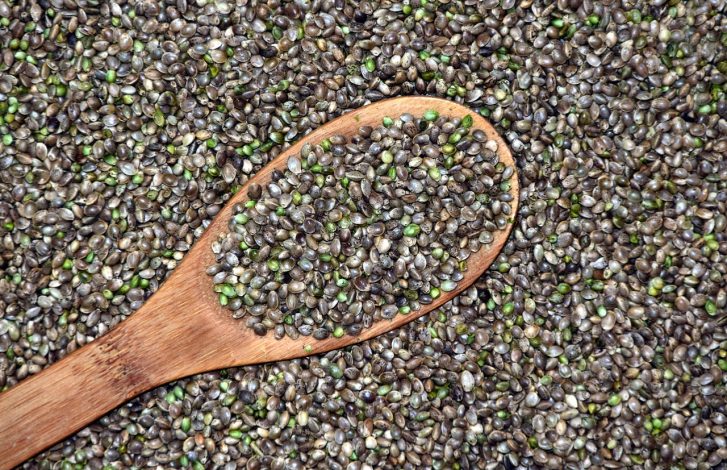Written by Juliette Bryant, Nutritionalist, Faculty Member, School of Health & Wellness at New Earth University
As a mother and a nutritionist I have seen first hand the difficulties that arise when trying to feed a family and to engage children in their food. As parents we want the best for our children but sometimes we overlook the obvious. Nutrition.
Good nutrition is the building blocks of life. So for a growing young person it is of vital important. So what are the key areas we need to look at for the health of our children?
Essential Fatty Acids (EFAs)
- EFAs are essential to every cellular function.
- The body cannot produce them, so they need to be obtained from food.
- We need a correct balance of omega 3:6:9 EFAs for optimal body and brain function.
- Good sources of EFAs to balance the body and help our ability to learn include hemp seeds, flax seeds and certain types of oily fish.
Recent evidence points to a link between EFA deficiency and how supplementation can help treat a range of common developmental disorders, including ADHD, dyslexia, depression, dyspraxia and autistic spectrum. In a randomised controlled trial with 102 dyslexic 8 to 12 year olds, six months of treatment with EFA supplements significantly improved reading age on standardised tests.
What can we do?
Balancing EFA’s through diet and/or supplementation is very important for children, and adults. Our brain bars are full of EFAs providing support throughout the day.
Brain Bars – Filled with essential fatty acids
- 1 cup almonds/ cashews (soak for an hour then discard soak water),
- 1 cup dates,
- ½ cup raisins,
- ½ cup shredded coconut,
- ½ cup sunflower seeds,
- ½ cup of pumpkin seeds
- 2 tbs sesame seeds,
- ½ cup ground flax seeds,
- 2 tbs tahini,
- 2 tbs honey/agave/ maple syrup,
- 2 tbs coconut oil,
- 1 tbs vanilla
Process: Place nuts and dates into a food processor and blend till smooth, then add the rest of the ingredients and blend. If you are making bars spread it out in a tin and place in the fridge to set.
(Blood) Sugar
The British Journal of Nutrition states:
“Good regular dietary habits are the best way to ensure optimal mental and behavioral performance at all times. One crucial factor is the supply of metabolic fuel to the brain, in the form of glucose. Glucose supply to the brain is maintained by complex mechanisms involving several hormones and feedback loops to ensure that glycaemia is regulated and maintained at appropriate levels at all times.”
This can be addressed by eating foods that help to maintain a steady sugar level instead of high sugar foods that can spike and crash blood sugar. When experiencing the sugar lows most people will automatically reach for more sugar to boost their energy, however this just repeats the cycle again. The brain needs energy and this can be obtained from carbohydrates. Most children consume excessive sugar, even for breakfast, causing bursts of energy followed by fidgeting, headaches, trouble concentrating, or drowsiness often in mid-morning or mid-afternoon. It has been observed in many clinical trials that when sucrose was eliminated from a hyperactive child’s diet, behaviour improved, but symptoms returned when sugar was reintroduced.
What can we do?
We can cut out refined sugars from the diet as much as possible and make sure our sugar comes from complex carbohydrates – i.e. whole grains or products made with whole grain flour rather than refined sugars such as millet flour, coconut flour or brown rice flour as an example. Whole grain products contain not only complex sugars for energy but fibre, which slow the rate of absorption of sugar as well as B-vitamins contained in the husk. Refined sugar has been striped of its mineral content just putting more of a strain on the body when processing it.
In avoiding refined sugar beware of “sugar-free” products. They often contain artificial ingredients such as aspartame, which are highly controversial. Our opinion is that Mother Nature knows best. A snack pot eaten in small amounts throughout the day can be a good remedy to this problem. Why not make a delicious sugar free chocolate mousse filled with brain food and yumminess.
Raw Chocolate Mousse (dairy and sugar free)
Serves 2
Ingredients:
1 avocado
1 banana
½ tin of coconut cream
2 tablespoons of cacao
2 tablespoons of honey/maple syrup or coconut sugar
Action: Blend all ingredients in a food processor until smooth and creamy
Antioxidants
The brain is made up of millions of cells called neurons. Neurons need good fats, protein, complex carbohydrates, micronutrients – vitamins, minerals and water. These nutrients are used to drive the learning functions of neurons. Neurons are sensitive to damage from environmental toxins that make their way into our systems, as well as toxic by-products formed in the body. Antioxidants from food can help to protect these neurons. Diets low in antioxidants have been shown to cause illness and disease. The brain is especially vulnerable to damage due to the amount of fat and requires high levels of antioxidants for protection.
What can we do?
It is important to increase fresh fruit and vegetables in the diet, especially raw food, which have the nutrients intact. A superfood smoothie is a wonderful way to get lots of antioxidants and EFA’s into children.
Superfood Smoothie – Filled with antioxidants to support the body
- ½ avocado
- ½ pear or apple
- 1/4 cucumber
- ¼ courgette
- 2 dates
- 2 dried apricots (without sulphur dioxide)
- 1 tbs ground flax seeds
- 1 tbs de-shelled hemp seeds
- ½ cup of filtered water
- ½ cup of coconut/hemp/seed milk
Blend all up in high-speed blender, if too thick add water to taste. Store in fridge for a day
Vitamins
All vitamins are essential for wellbeing. For example, B vitamins aid in the production of energy for the brain and affects serotonin production which helps use feel balanced. B vitamins are also vital for focus and concentration and are found in whole grains as well as leafy greens.
What can we do: Eating a diet rich in a range of foods, a rainbow of colours helps make sure we are getting a cross section of nutrients in the diet.
Cooking for a family doesn’t have to be hard work. There are so many fun recipes out there that all the family will love. Why not make the chocolate mousse with your children. I know my family love it, it barely makes it from the mixing bowl into the fridge. And what a joy knowing that they are eating something so healthy and it tastes delicious.
For more recipes ideas visit www.julietteskitchen.tv








